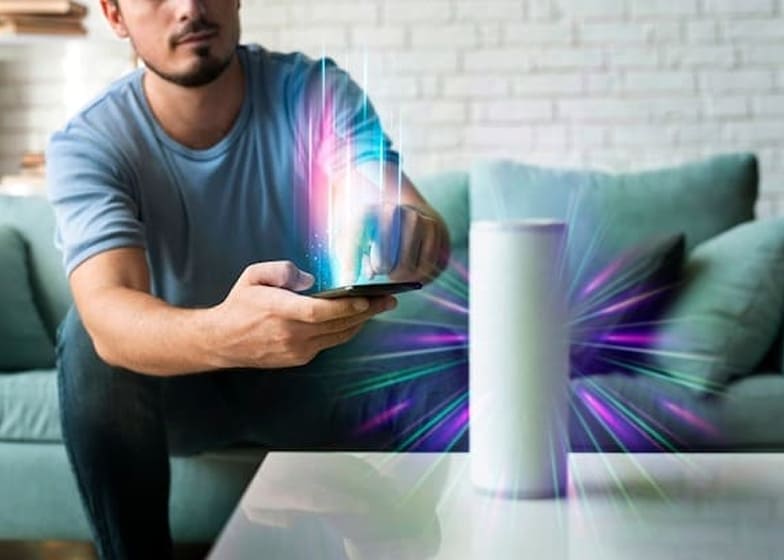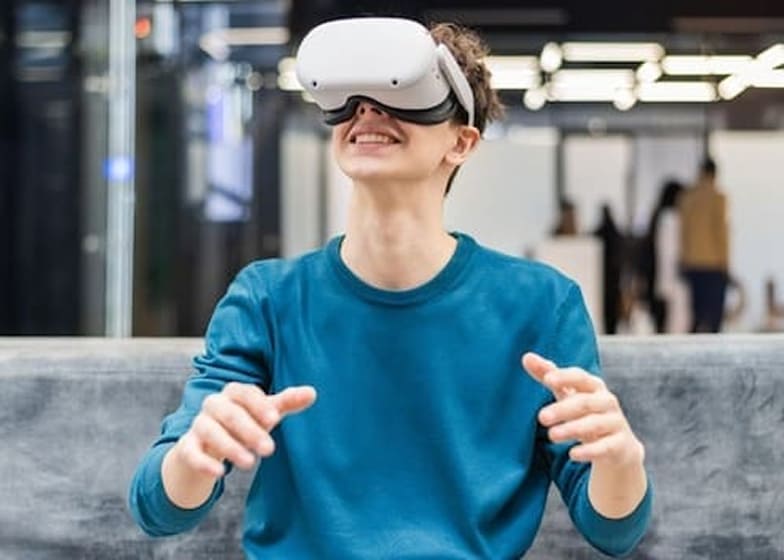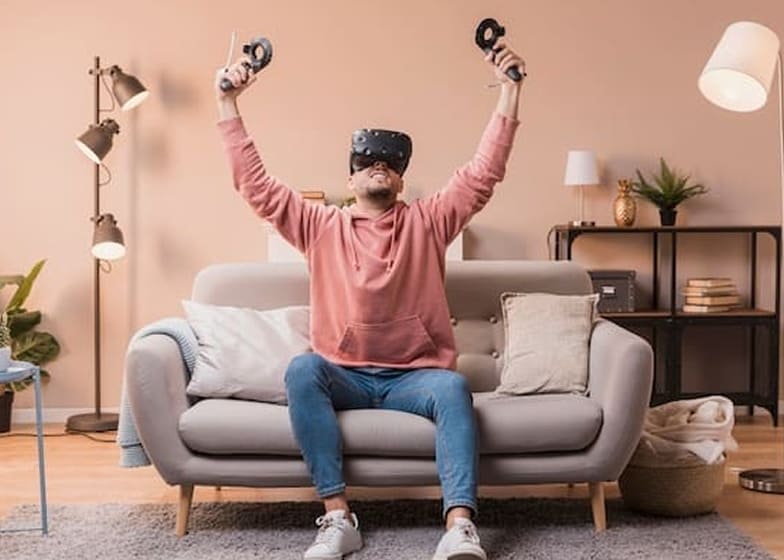Wearable technology has emerged as a revolutionary trend, blending healthcare, fitness, and productivity into devices that people can wear daily. These devices, such as smartwatches, fitness trackers, and smart glasses, collect real-time data on physical activity, heart rate, sleep patterns, and other vital signs. By providing instant feedback and insights, wearables empower individuals to monitor their health, set fitness goals, and adopt healthier lifestyle habits, ultimately improving overall well-being.
Beyond personal health, wearable devices are increasingly used in workplace productivity. Smart wearables can track employee movement, monitor stress levels, and provide reminders for breaks or posture correction, helping organizations enhance employee wellness and efficiency. In sectors like logistics, healthcare, and manufacturing, wearables can improve safety by alerting workers to hazardous conditions or monitoring vital signs during physically demanding tasks.
Wearable technology also facilitates data-driven decision-making. With integrated AI and analytics, the data collected can be analyzed to provide personalized recommendations, predictive insights, and actionable guidance. For example, smart health devices can detect irregular heartbeats or sleep disturbances and alert users or healthcare providers promptly, enabling preventive care. Similarly, productivity wearables help identify patterns that optimize work schedules, reduce fatigue, and enhance focus.
The growth of wearable technology has created opportunities not only for users but also for businesses and entrepreneurs. Companies designing, manufacturing, or developing software for wearables can tap into a rapidly expanding market, with potential revenue from device sales, subscription services, and health analytics platforms. As wearable technology continues to advance, it promises to enhance both personal health and professional productivity, making it an indispensable tool in the modern digital lifestyle.
Understanding Wearable Technology
Wearable technology refers to electronic devices that can be comfortably worn on the body, often equipped with sensors and wireless connectivity to collect, monitor, and analyze data. Unlike traditional gadgets, wearables are designed for continuous interaction with the user, providing real-time insights into health, fitness, productivity, or environmental conditions. Common examples include smartwatches, fitness trackers, smart glasses, wearable ECG monitors, and even clothing embedded with sensors.
At its core, wearable technology relies on sensors and data analytics to track various metrics. Health-focused wearables can monitor heart rate, blood pressure, sleep patterns, calorie expenditure, and activity levels, while productivity-oriented devices can track movement, posture, or stress levels. Some advanced wearables incorporate AI to analyze collected data and provide personalized recommendations, predictive insights, and alerts for health or performance optimization.
Wearables are increasingly integrated into everyday life and workplaces. In fitness and healthcare, they help users set goals, monitor progress, and detect anomalies that may require medical attention. In professional environments, wearables can enhance employee productivity and safety—for instance, alerting workers in high-risk industries about environmental hazards or monitoring fatigue to prevent accidents.
Furthermore, wearable technology is a gateway to data-driven decision-making and innovation. The data collected can be aggregated, analyzed, and shared with healthcare providers, trainers, or organizational managers to improve outcomes. The combination of convenience, continuous monitoring, and actionable insights makes wearable technology a transformative tool for personal well-being, workplace efficiency, and even preventive healthcare strategies.
Types of Wearable Devices
Smartwatches
Smartwatches are versatile wearable devices that combine timekeeping with advanced features such as fitness tracking, heart rate monitoring, notifications, GPS, and mobile app integration. They often act as an extension of smartphones, allowing users to access calls, messages, and apps directly from their wrist.
Example : Apple Watch, Samsung Galaxy Watch, Garmin
Benefit : Tracks health metrics, enhances productivity, and provides convenience in communication.
Fitness Trackers
Fitness trackers are designed to monitor physical activity, sleep patterns, calories burned, and steps taken. Many models also include heart rate monitoring and integration with health apps for goal setting and progress tracking.
Example : Fitbit Charge, Xiaomi Mi Band, Garmin Vivosmart
Benefit : Helps users maintain fitness goals, adopt healthier lifestyles, and monitor overall wellness.
Smart Glasses
Smart glasses provide augmented reality (AR) experiences, overlaying digital information onto the real world. They can be used for navigation, remote assistance, gaming, or hands-free access to information.
Example : Google Glass, Vuzix Blade, Microsoft HoloLens
Benefit : Enhances productivity, learning, and immersive experiences.
Wearable ECG and Health Monitors
These medical-grade devices monitor vital signs like heart rate, blood pressure, oxygen levels, and ECG signals in real-time. They are especially useful for patients with chronic conditions or those requiring continuous health monitoring.
Example : Withings ScanWatch, AliveCor KardiaMobile
Benefit : Provides early detection of health issues and enables preventive care.
Smart Clothing and Textiles
Smart clothing incorporates sensors into fabrics to monitor biometric data such as heart rate, posture, body temperature, and movement. These garments are used in sports, healthcare, and workplace safety.
Example : Hexoskin Smart Shirt, Athos Performance Apparel
Benefit : Continuous monitoring without extra devices, improving fitness, posture, and safety.
Wearable Audio Devices
These include smart earbuds and hearing aids that provide fitness tracking, voice assistance, noise cancellation, and health monitoring features. Some advanced earbuds monitor heart rate or oxygen levels.
Example : Apple AirPods Pro, Bose Hearphones
Benefit : Combines audio functionality with health and productivity tracking.
VR/AR Headsets
Virtual reality (VR) and augmented reality (AR) headsets immerse users in digital environments for gaming, training, education, or remote collaboration. They often include motion sensors and eye-tracking for interactivity.
Example : Oculus Quest, HTC Vive, PlayStation VR
Benefit : Enables immersive experiences, remote learning, and virtual collaboration.
Challenges and Limitations
High Cost of Devices
Many wearable devices, especially advanced smartwatches, AR glasses, and medical-grade monitors, are expensive. This high initial cost can limit accessibility for average consumers or small businesses looking to implement wearable solutions.
Privacy and Data Security Concerns
Wearables collect sensitive personal data, including health metrics, location, and activity patterns. Inadequate security measures or breaches can compromise user privacy, raising concerns about misuse of personal information.
Accuracy and Reliability Issues
Some wearables may provide inaccurate readings due to sensor limitations, improper usage, or interference from external factors. Inaccurate data can lead to misleading health insights or poor productivity recommendations.
Battery Life and Maintenance
Continuous tracking and real-time monitoring require frequent charging. Limited battery life or the need for regular maintenance can reduce convenience and affect consistent usage.
User Adoption and Learning Curve
Not all users are tech-savvy. Understanding how to use devices effectively, sync with apps, and interpret data can be challenging, leading to underutilization of wearable technology
Interoperability and Compatibility Issues
Wearables often need to integrate with smartphones, apps, or other devices. Compatibility issues across brands and platforms can hinder seamless use and limit the potential of automated or connected systems.
Over-Reliance on Technology
Users may become too dependent on wearable devices for monitoring health or productivity, potentially neglecting personal judgment or manual tracking, which can lead to reduced awareness of their own wellbeing.
Data Overload
Wearables generate large volumes of data. Without proper analytics or interpretation, users may be overwhelmed with information, making it difficult to extract actionable insights.
Summary
Wearable technology has revolutionized the way individuals monitor health and enhance productivity by providing real-time data and actionable insights. Devices like smartwatches, fitness trackers, smart glasses, and medical monitors track vital signs, activity levels, sleep patterns, and workplace metrics, helping users make informed decisions for wellness and efficiency. While wearables improve convenience, personalization, and preventive healthcare, they also face challenges such as high costs, data privacy concerns, and device compatibility issues. Despite these limitations, wearable technology continues to create significant opportunities for businesses, entrepreneurs, and professionals, with earning potential ranging from device sales to consulting and subscription-based health and productivity services.
















